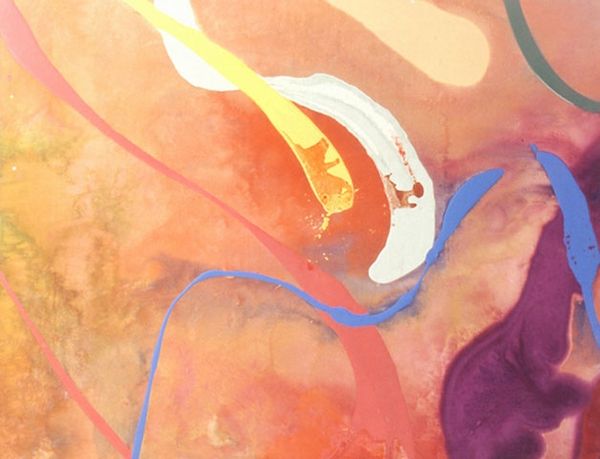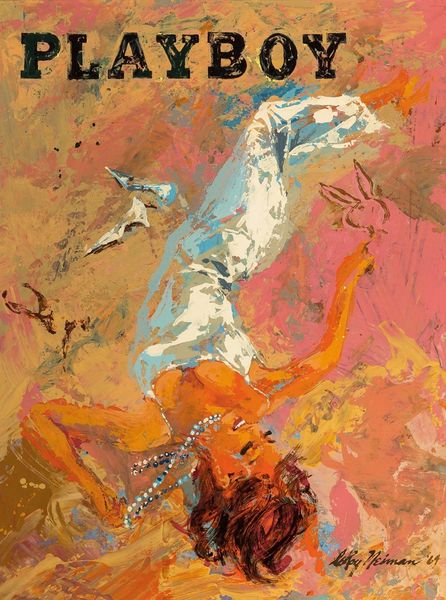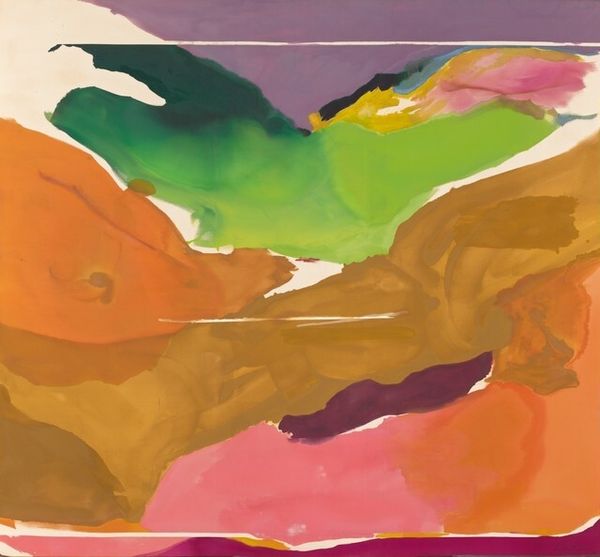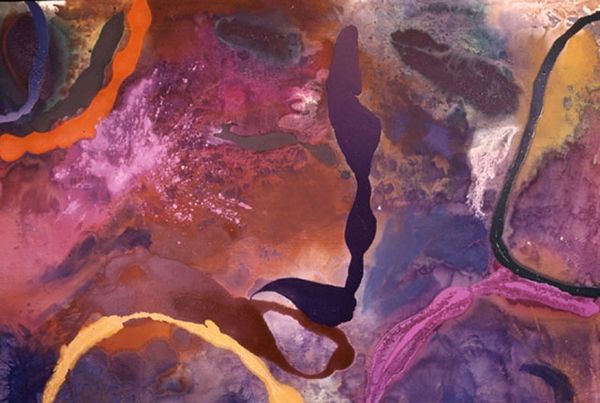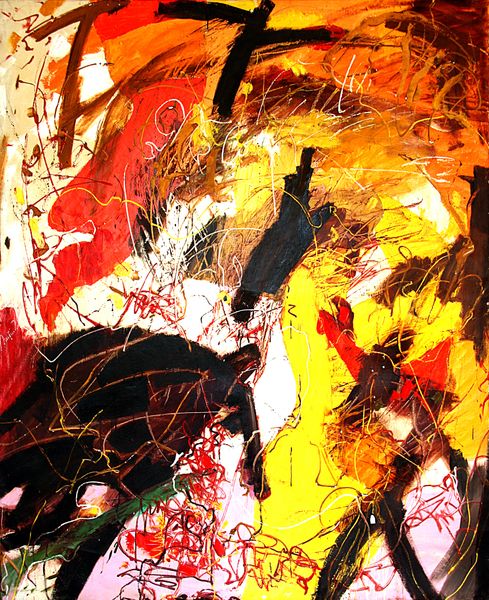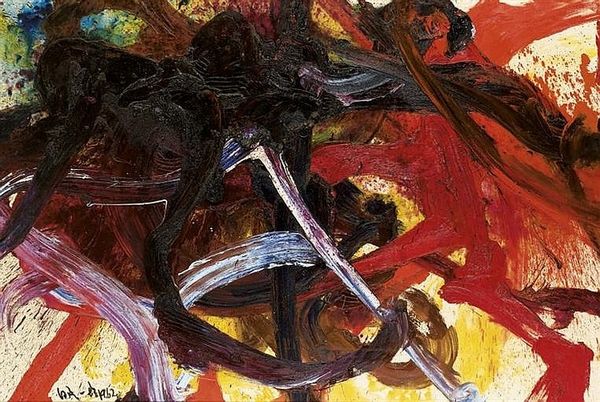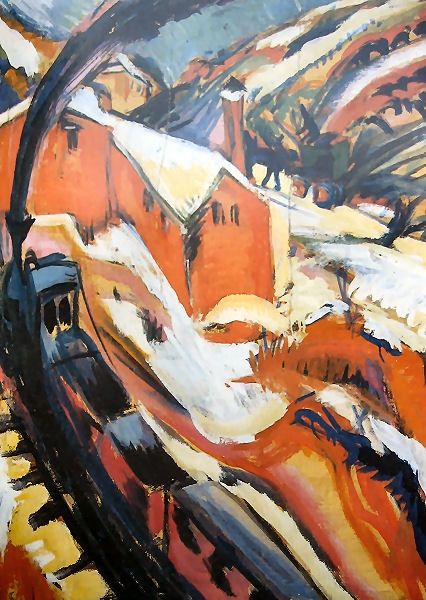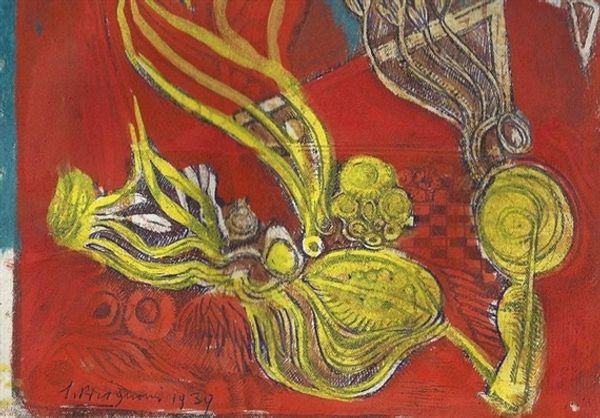
oil-paint, acrylic-paint, gestural-painting
#
abstract-expressionism
#
abstract expressionism
#
abstract painting
#
non-objective-art
#
oil-paint
#
acrylic-paint
#
abstract
#
oil painting
#
gestural-painting
#
acrylic on canvas
#
modernism
Copyright: Friedel Dzubas,Fair Use
Editor: Here we have an untitled piece by Friedel Dzubas, seemingly composed of oil and acrylic paint. It evokes a sense of chaotic energy. I’m curious, how do you interpret this work, especially considering its place within abstract expressionism? Curator: Looking at Dzubas's work, it's crucial to understand the sociopolitical landscape in which Abstract Expressionism flourished. It emerged in the post-World War II era, a period marked by profound anxiety and a sense of existential questioning. How do you see these colors working together? Do you think this relates to cultural movements from this period? Editor: I see the different colors and lines as somewhat separated – there isn't a cohesive structure and organization present here. Curator: Exactly. The apparent lack of structure can be seen as a visual articulation of postwar disillusionment and the breakdown of traditional social structures. This rejection of established norms reflects the feminist critique of patriarchal systems that gained momentum during this period. Where do you see a breaking from tradition in this work? Editor: I see it in how Dzubas focuses on the flatness of the picture plane through washes of color instead of trying to create an illusion of depth, right? Curator: Precisely. This is an artwork pushing back against traditional expectations. And note how the non-objective elements serve as a way of escaping a system that seeks to control everything, wouldn't you say? Editor: That's really insightful. I hadn't considered the painting as a form of active resistance. Curator: Art provides a space where conventions are constantly being challenged and rewritten. Thanks for discussing with me. Editor: Thank you as well; that was so illuminating!
Comments
No comments
Be the first to comment and join the conversation on the ultimate creative platform.
